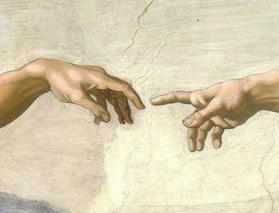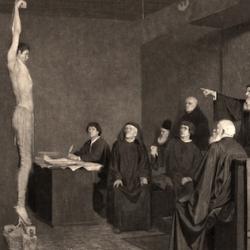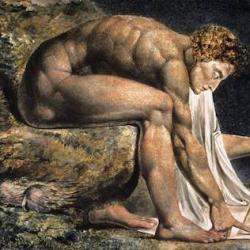“The Trinity is a mathematical absurdity in the context of a god limited in his operations to just the four dimensions of length, width, height, and time,” writes Hugh Ross ( The Creator and the Cosmos: How the Latest Scientific Discoveries of the Century Reveal God ). To avoid the absurdity, Ross suggests that God exists in multi-dimensional space. As summarized by John Byl ( Divine Challenge: On Matter, Mind, Math & Meaning
), Ross argues that we imagine a “two-dimensional creature living on a flat plane. If a human were to stick three spread fingers through this plane the two-dimensional creature would experience this as three distinct, isolated circles. Yet, in the higher, three-dimensional world, these three fingers are actually connected to a single body. Ross conjectures that, in a similar fashion, God’s three Persons might be unified in a single entity in a higher-dimensional space.”
I haven’t confirmed that this is in fact Ross’s argument. Whether it is his or not, it is about as archetypally modalist an argument as one would want to find – assuming, always, that finding modalist arguments is one’s aim. Even if it’s not Ross’s argument, it would fit neatly into Ross’s understanding of Genesis and creation. And it leads me to suspect that there is an implicit modalism lurking behind some accounts of creation. At the very least, the pattern of argument or thought is parallel: For modalists, there is an unknown God behind the revealed God; for non-literal interpretations of Genesis, there is a creation story lurking behind the revealed story.















